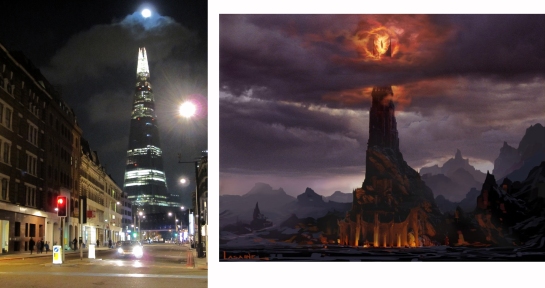The minute I came across this book I knew I had to read it. Being an architect who does not currently practice architecture, I had many reasons to identify with it. Especially when I realised that one of its recurring themes was how neglected is architecture’s political and social impact in favour of aesthetics, I knew that the author had won me over. According to LaCecla this occurred gradually. After the war the architects “played their trump card as “reformers of society”, as “engineers of the human soul”1, only to find out that this sort of patronising through architecture does not work. The failure of ideologies and the rise of capitalism provided the fertile ground for marketing and branding to flourish thus architectural practice changed dramatically for the worst.
To quote the author: “architects still carry a lot of weight; they are able with this weight to provoke a great deal of damage through ignorance and incompetence, and above all through the strange conviction that the first thing cities need is an important “signature” that will propel them into the world of fashion.” 2
As he mentions in another part of the book the true problem concerning architecture is that it can effectively promote co-citizenship but hardly any of the famous practising architects is addressing this issue. Architectural students in universities today are not offered the “tools to observe analyse and decipher the social impact of the built projects they design”3 hence they are not trained on how cities work and they end up being “adolescent hobbyists who are selling themselves as public artists.”4
LaCecla did not become an architect but still managed to remain in the field as a consultant and a critic in several international architectural competitions. In sharing his experiences he does not hesitate to be extremely outspoken and blunt about many of the so-called star-architects that crossed his path. What he has to say about them is far from politically correct like when he mentions that Koolhaas’s intelligent realism “uses the misery of the world just to demonstrate how up-to-date he is, how really ahead of everyone else”5 or that “Frank Gehry goes into his studio, screws a sheet of paper into a ball and says to his faithful CAD implementers: I want that. Thus architecture is vaporized”6. Those eloquent examples reveal much truth about the architectural world nowadays and give clues to how “branding” got to be “just another excuse for power’s concentration at the top.”7
I think it is rather obvious that I enjoyed immensely reading this book and I recommend it wholeheartedly. It is straightforward, wonderfully easy to read and not at all patronising or pretentious. However there is something within it that I am totally opposed to.
La Cecla apparently is a close friend and colleague of Renzo Piano. He mentions him a number of times, basically presenting him as one of the few famous architects in the world with a social agenda. In several chapters he praises him mentioning that he has worked closely with him as his consultant and that he believes that Piano is basically the only architect he knows who is not interested in expanding his brand more than he cares about the communities that he affects with his work.
This is where I disagree with La Cecla completely and I will change the subject a bit to state why. Seeing The Shard taking over London’s skyline, scarring irreversibly London Bridge and Southwark and declaring its superiority as the tallest building in Europe, I truly do not believe that Piano’s architectural values are at all what La Cecla makes them out to be. The Shard is a scale-less sleek mountain of a building and its form choses not to reveal anything about the luxurious apartments and the 5 star hotel that the consortium of Qatari investors that financed it, paid Renzo Piano to design inside it. In most of the interviews that Piano has given, he declares he wanted to create a beautiful building that would dissolve into the air and would offer 360 views from its top to the public. To my opinion this is a load of absurd promotional nonsense. Especially since the tickets for a few minutes of view-watching are already being sold for 25£ each, it is obvious that they are hardly accessible to the public. This massive building totally disregards or rather violates the neighbourhood it is built on thus all the good things that La Cecla has to say about its architect and his previous projects, as far as I am concerned, vanish into thin air. The Shard to me looks just evil and it reminds me too much of Sauron’s eye from Lord of the Rings where all malice springs from.

Left the Shard with the full moon over it Right: Lord of the Rings, The Eye of Sauron from where all evil springs from
Its position is too conspicuous, if it were in the City or at Canary Wharf in the company of other tall evil buildings it would be more acceptable. But standing smugly on its own, dominating London and gentrifying London Bridge to the point that it dissolves its previous distinct sense of place, it is truly inexcusable.
Going briefly back to the book to conclude, my objection concerning Piano and the Shard does not diminish its value. I still believe that “Against Architecture” is worth reading but as every other book it should be read with a critical engaging mind in order to draw accurate conclusions.
Quotes
Franco La Cecla(2012), Against Architecture, San Fransisco: PM Press
1. Page 45 / 2. Page50 / 3.Page 116 / 4.Page 10 / 5. Page 24 / 6. Page 30 / 7. Page 29
Read architects’ and critics’ views about the Shard in this AR article here


